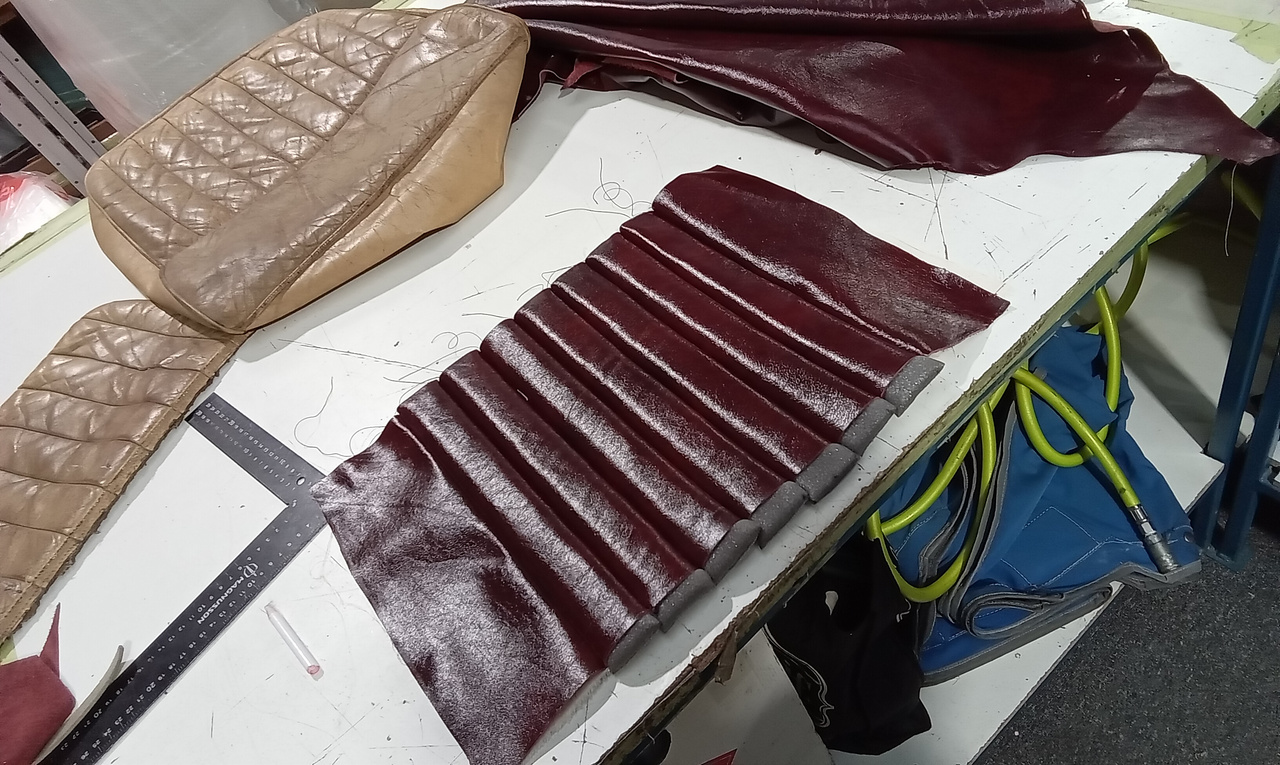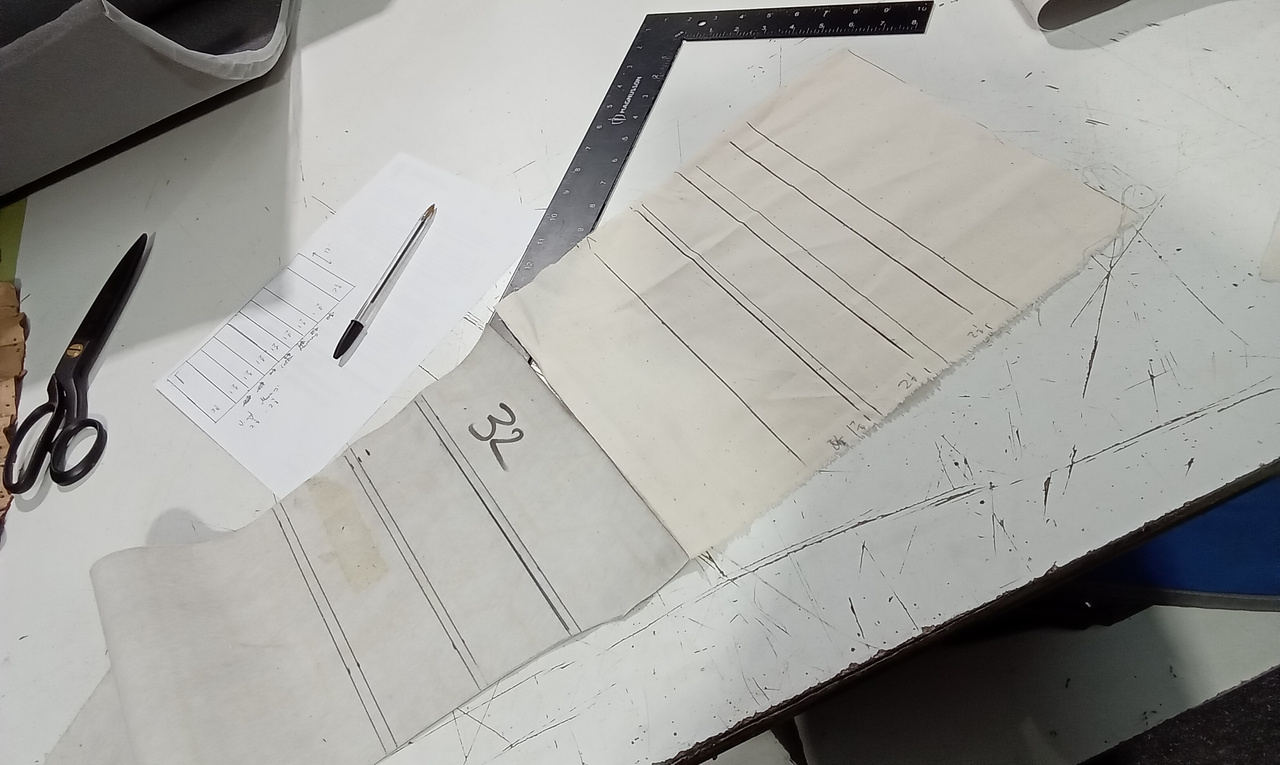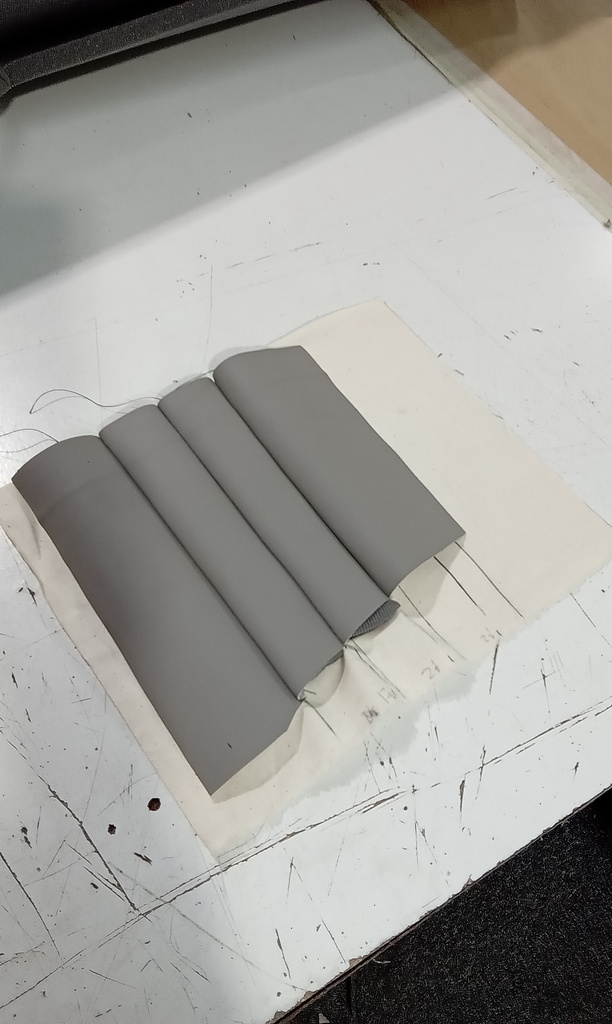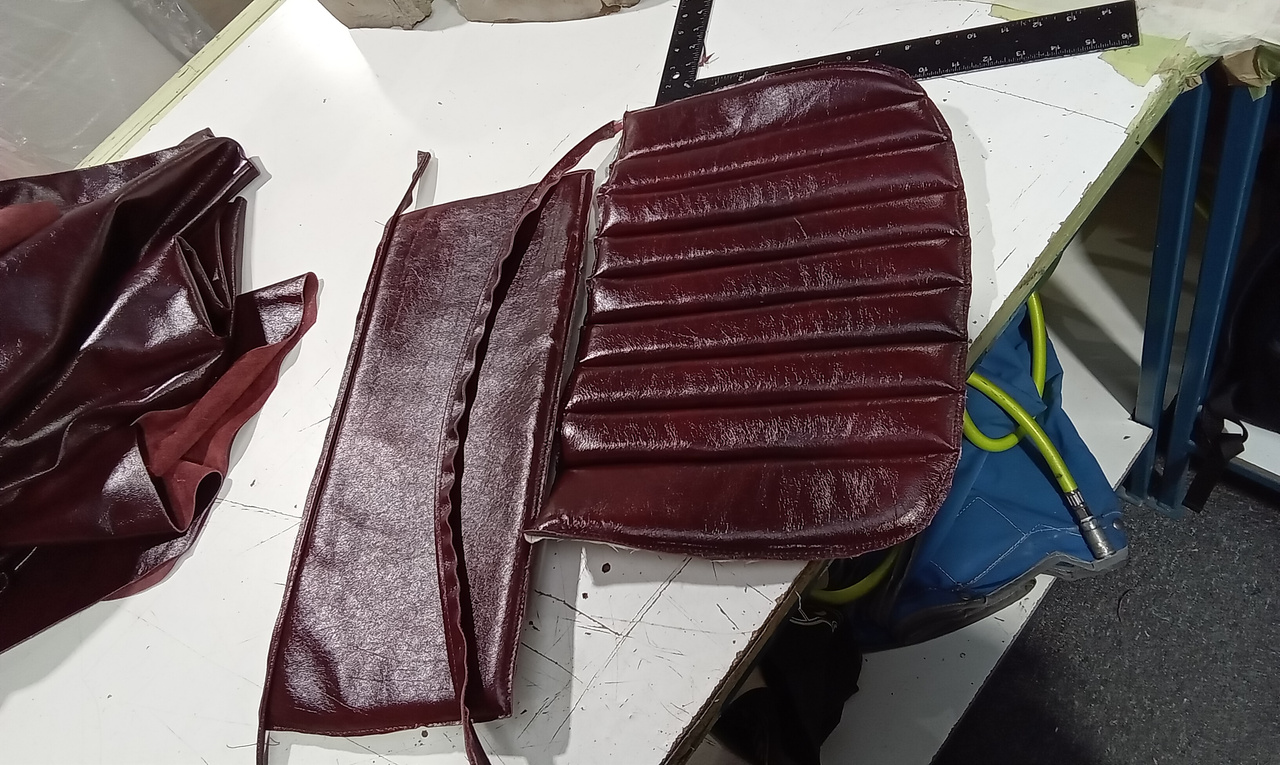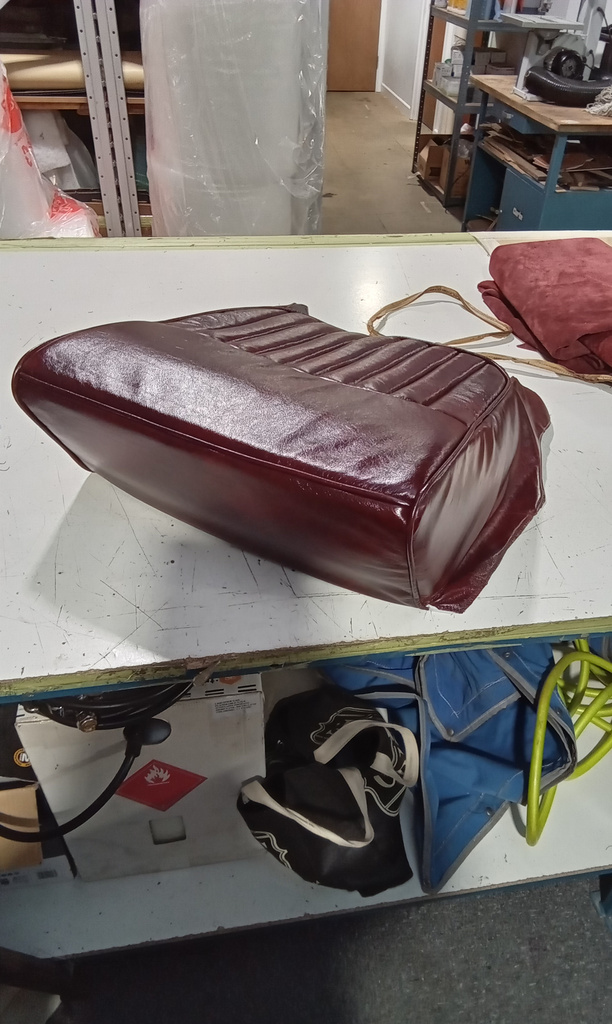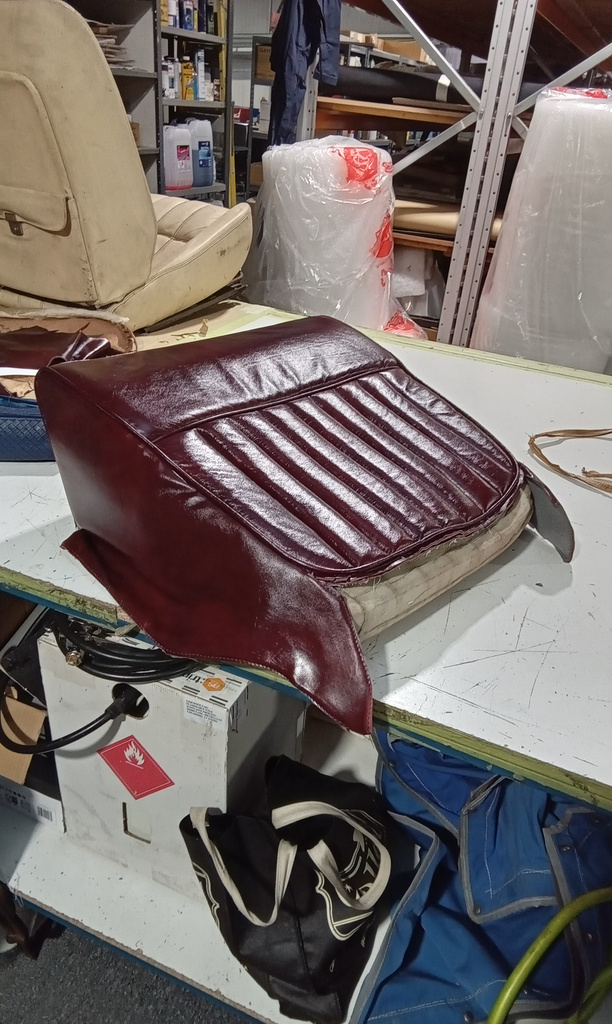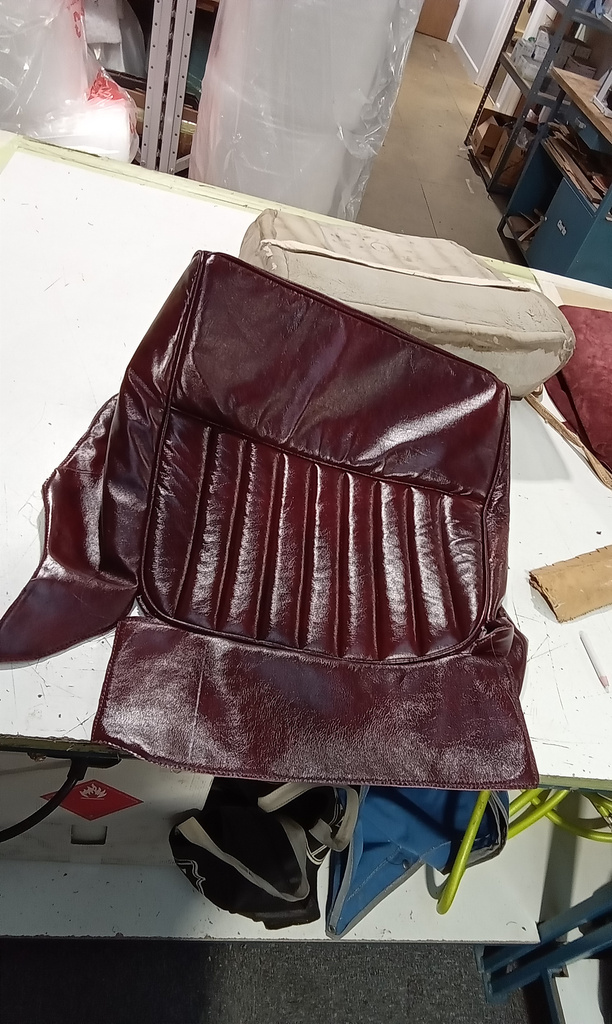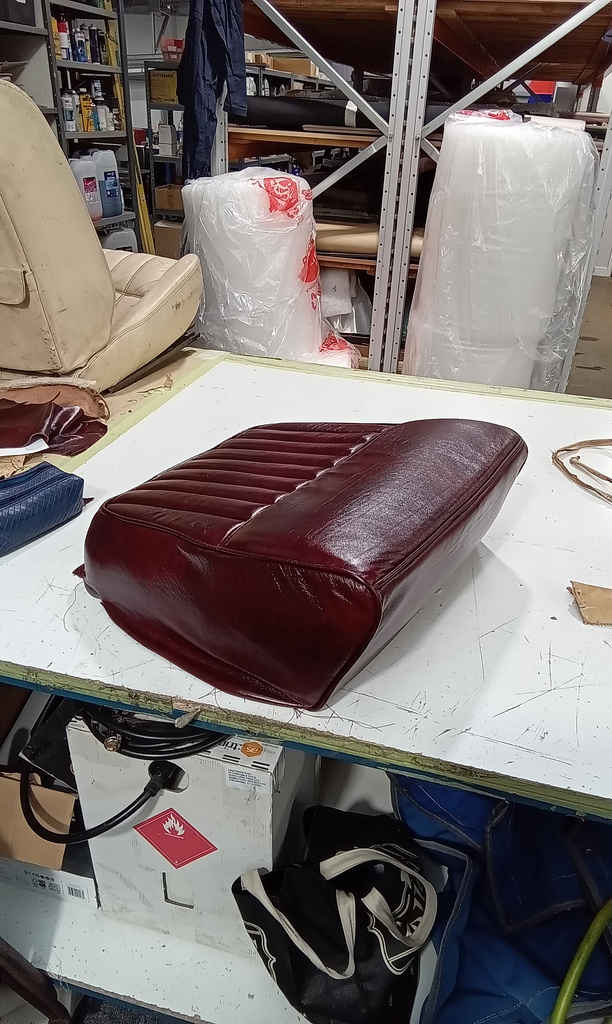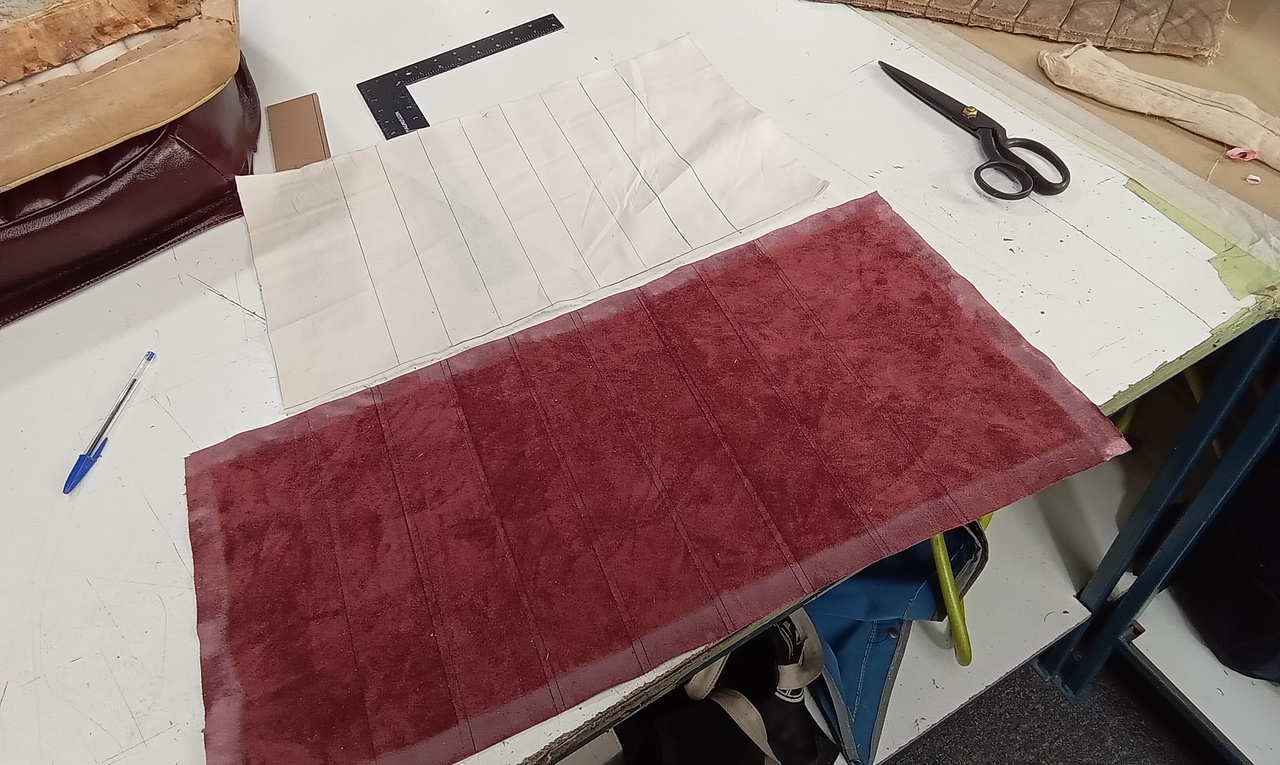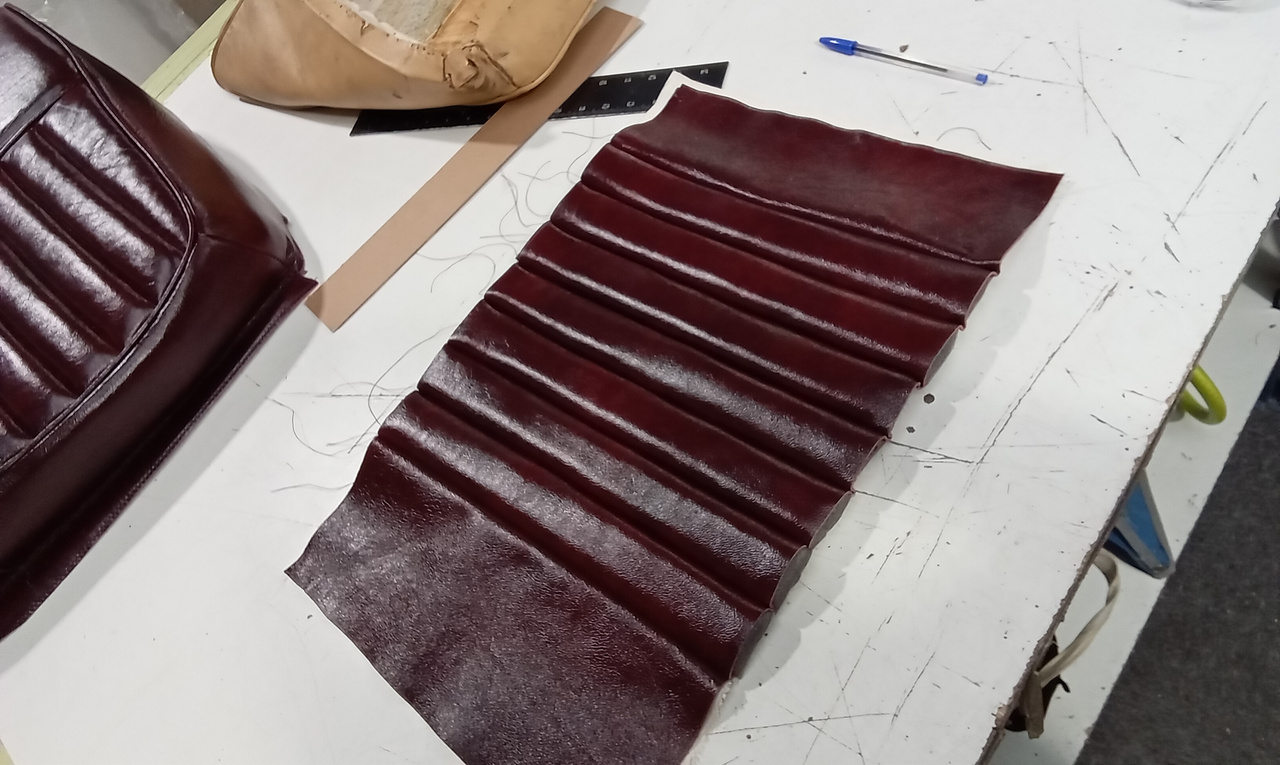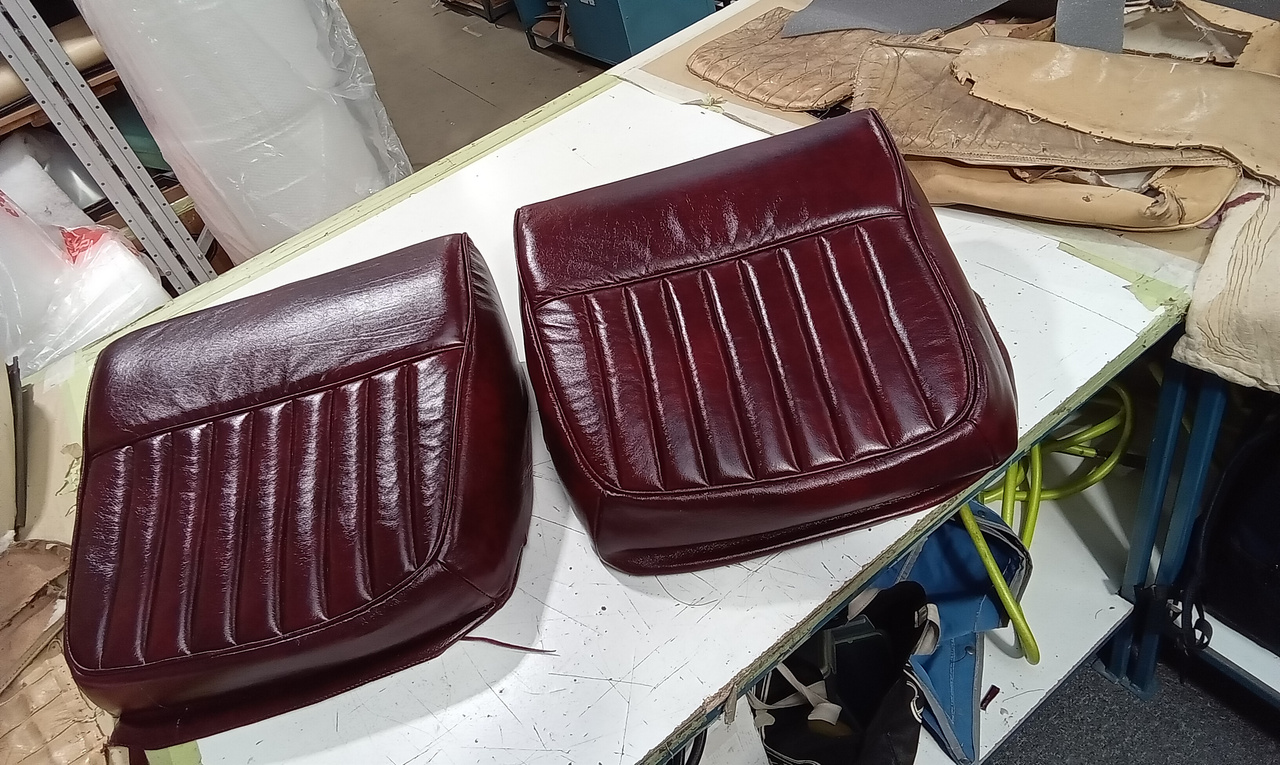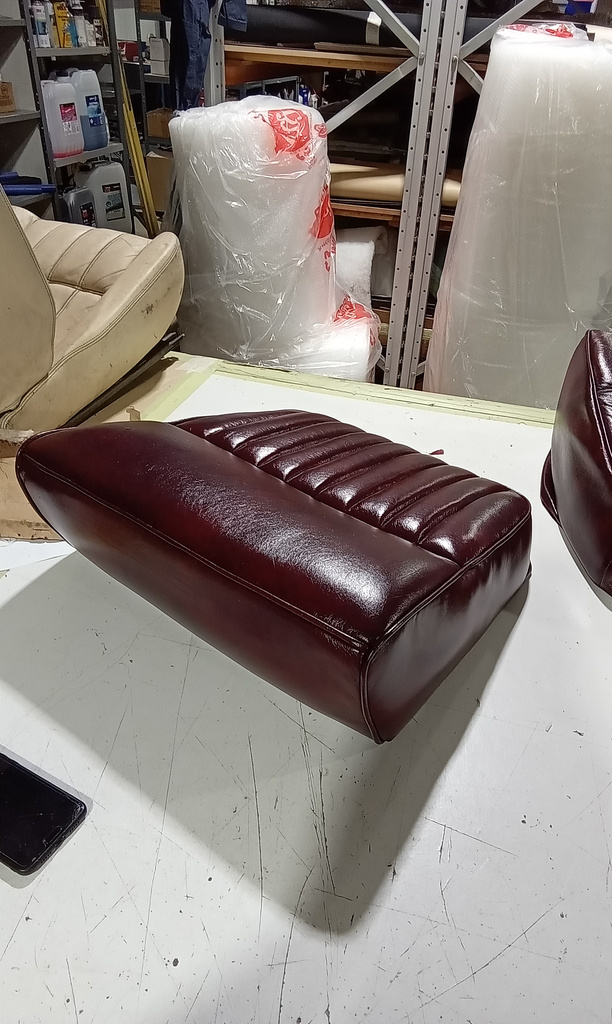To begin with, Lydia has made a mock-up panel to test the measurements for the tuck and roll flutes. This requires precise measurement and calculation to ensure that the flutes end up at the correct width. If they do not, then the panel will not fit! Tuck and roll requires the correct measurements on both a cotton underlayer and the leather upper layer. Each flute is then filled with foam after it has been sewn up, thus encapsulating the foam into the channel. Lydia has not tried this method of tuck and roll before, but found it to be quite effective, and it ensures that the seat retains its original look. Next was the shaping of the panel to make it fit the seat. She used a combination of the original pieces and her judgement to determine the size and shaping of the panel, then cut it down to size. As we are working with the original foam, which is in fairly good condition, it didn’t require much deviation from the original pattern piece. Lydia then worked her way through laminating all of the other pieces onto scrim foam, adding her point marks, and sewing them on. After many attempts at trying the covers on and altering them, Lydia is happy with the fit, so she begun to staple them and glue the flies to the foam.
